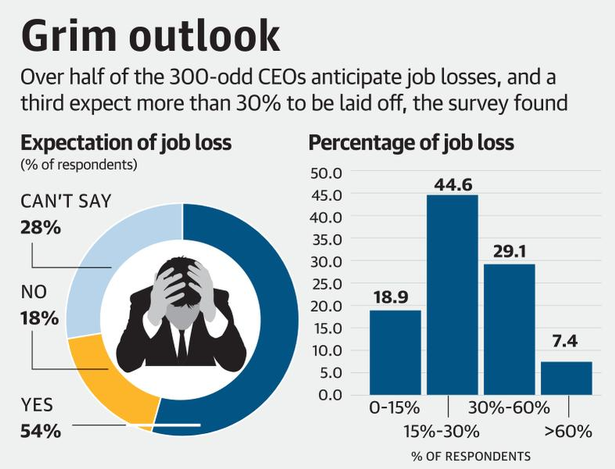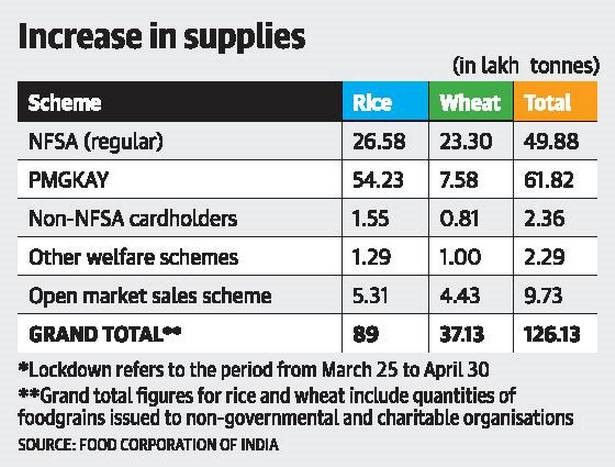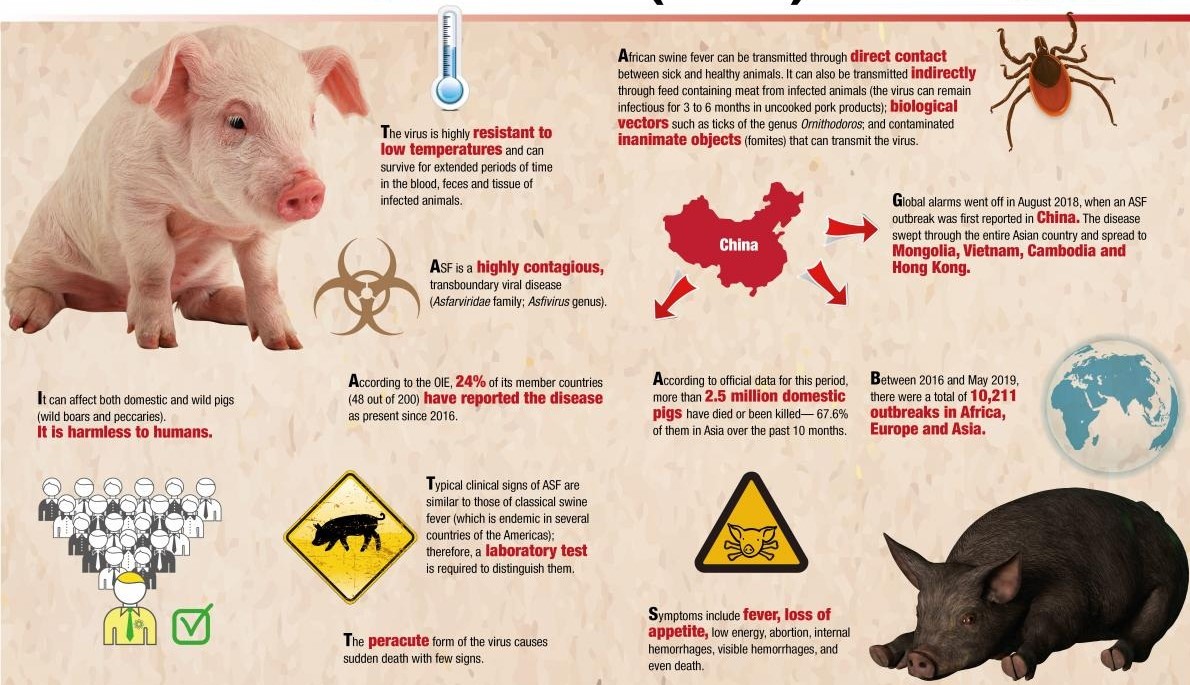4th May 2020 Current Affairs in English

4th May 2020 Current Affairs in English – Today Current affairs PDF link available below.
Dear Aspirants, we (Vetripadi.com team) have come with Daily Current affairs analysis. It is prepared to crack the various competitive exams. We are here to make sure your preparation easy. We will update the current affairs every day. It will help for both preliminary and mains (facts oriented with background information) for your preparation. We need you support.
VETRIPADI Daily Newsletter
வெற்றிப்படி.காம் | வெற்றிக்கு நீ படி!!!
Daily Current affairs for Competitive
Exams ( UPSC, TNPSC, SSC)
4th MAY2020
TABLE OF CONTENTS
- CII proposes different rules for top 100-150 economic priority districts
- 126 lakh tonnes of food grains supplied to States: FCI
- Prelims related information in news
- African swine fever: Assam told to go for culling
- Even Cobra hatchlings are lethal, caution experts
- UAE books three more Indians for spreading hate online4.
- Air warriors salute corona warriors on the ground
- New policy for satellite TV channels lays ground for MHA interference
1. CII proposes different rules for top 100-150 economic priority districts
Information in News
- CII proposes different rules for top 100-150 high performing economic priority districts in the third phase of the lockdown.
- CII has called for changes in zone classifications, saying that the 100-150 districts with the highest economic value identified either through
- GDP contribution or
- Density of industrial clusters should be allowed to restart industrial activity, even in containment areas, if stringent rules are followed.
- It argues that the cost of 100% testing and aggressive health protocols is lower than continued shutdown in these areas.
- In a CII poll of 300-odd CEOs released, almost half say an economic recovery will take over a year.
- More than half foresee job losses. Three out of four participants identified the complete shutdown of operations as their biggest problem, followed by a lack of demand, supply and distribution chain woes, and a credit crunch.
- The industry body argued for a calibrated exit from the lockdown in the country’s most crucial economic regions.
- Within these districts, small restricted areas such as the actual street, mohalla, building or industrial complex where COVID-19 cases have been identified should be treated as containment zones, according to CII’s strategy paper.
- An area of about 500 metres radius around these areas should be treated as orange zones. The remaining area of the district should be classified as green zones.
- Workers would have to be housed on the premises or within walking distance, and both raw materials and finished goods would be disinfected and kept in isolation for 72 hours before use.
- The poll of CEOs, the majority of whom belong to the crucial MSME sector, showed that almost two-thirds of respondents expect their revenues to fall more than 40% in the current April to June 2020 quarte
- For the full financial year 2020-21, a third of respondents still expect a more than 40% revenue fall, while another third expect their topline to drop between 20% and 40%.
- Most of the firms polled expect domestic demand to recover faster than exports. Only 18% do not expect job losses in their sector. Only 35% have faced salary reductions in their own firms so far, but almost half of those say that the duration of their wage cut is undecided.

Confederation of Indian Industry (CII)
- The Confederation of Indian Industry (CII) works to create and sustain an environment conducive to the development of India, partnering industry, Government, and civil society, through advisory and consultative processes.
- CII is a non-government, not-for-profit, industry-led and industry-managed organization, playing a proactive role in India’s development process.
- Founded in 1895 and celebrating 125 years in 2020, India’s premier business association has more than 9100 members, from the private as well as public sectors, including SMEs and MNCs, and an indirect membership of over 300,000 enterprises from 291 national and regional sectoral industry bodies.
- CII charts change by working closely with Government on policy issues, interfacing with thought leaders, and enhancing efficiency, competitiveness and business opportunities for industry through a range of specialized services and strategic global linkages. It also provides a platform for consensus-building and networking on key issues.
- Extending its agenda beyond business, CII assists industry to identify and execute corporate citizenship programmes.
- Partnerships with civil society organizations carry forward corporate initiatives for integrated and inclusive development across diverse domains including affirmative action, healthcare, education, livelihood, diversity management, skill development, empowerment of women, and water, to name a few.
- India is now set to become a US$ 5 trillion economy in the next five years and Indian industry will remain the principal growth engine for achieving this target.
- With the theme for 2019-20 as ‘Competitiveness of India Inc – India@75: Forging Ahead’,
- CII will focus on five priority areas which would enable the country to stay on a solid growth track. These are
- Employment generation,
- Rural-urban connect,
- Energy security,
- Environmental sustainability and
- Governance
- With 68 offices, including 9 Centres of Excellence, in India, and 11 overseas offices in Australia, China, Egypt, France, Germany, Indonesia, Singapore, South Africa, UAE, UK, and USA, as well as institutional partnerships with 394 counterpart organizations in 133 countries,
- CII serves as a reference point for Indian industry and the international business community.
2. 126 lakh tonnes of food grains supplied to States: FCI
Information in News
- The Food Corporation of India (FCI) has supplied around 126 lakh tonnes of food grains, almost equivalent to two-and-a half months’ supply in normal situations, to States and Union Territories during COVID-19 lockdown.
- On an average, every month, the FCI issues around 50 lakh tonnes of food grains to States and union territories under the norms of the National Food Security Act (NFSA) and other schemes, according to D.V. Prasad, FCI Chairman and Managing Director.

What has contributed to the steep hike in the disbursal?
- The implementation of the Pradhan Mantri Garib Kalyan Ann Yojana (PMGKAY), under which beneficiaries of the NFSA are given 5 kg of food grains each per month free of cost for three months (April – June) over and above their monthly entitlement of 5 kg per person.
- Nearly 62 lakh tonnes of food grains have been lifted by the States under the PMGKAY and this is about 50% of the total allotment of around 120 lakh tonnes.
Pradhan Mantri Garib Kalyan Yojana
- The Pradhan Mantri Garib Kalyan Yojana (PMGKY) is Union Government’s second income disclosure scheme (IDS) to allow tax evaders to come clean with unaccounted wealth.
- (PMGKY) notified along with other provisions of Taxation Laws (Second Amendment) Act, 2016 came into effect from 17 December 2016 and it will remain open until 31 March, 2017.
- It provides for 50% tax and surcharge on declarations of unaccounted cash deposited in banks.
- The recently launched Garib Kalyan yojana, is similar to Income tax declaration scheme, however there are few differences.
- Under this scheme, tax rate will be higher and the declared income.
- The declarant under this regime shall be required to pay tax @ 30% of the undisclosed income, and penalty @10% of the undisclosed income.
- Further, a surcharge to be called ‘Pradhan Mantri Garib Kalyan Cess’ @33% of tax is also proposed to be levied.
- In addition to tax, surcharge and penalty (totaling to approximately 50%), the declarant shall have to deposit 25% of undisclosed income in a Deposit Scheme which will be refunded only after 4 years without any interest to be notified by the RBI under the ‘Pradhan Mantri Garib Kalyan Deposit Scheme, 2016’.
- This amount is proposed to be utilised for the schemes of irrigation, housing, toilets, infrastructure, primary education, primary health, livelihood, etc., so that there is justice and equality.
The Food Corporation of India
- The Food Corporation of India is an organization created and run by the Government of India.
- It is a statutory body under the Ministry of Consumer Affairs, Food and Public Distribution, Government of India.
- Its top official is designated as Chairman. It was set up in 1965 with its Initial headquarters at Chennai.
- Later this was moved to New Delhi. It also has regional centers in the capitals of the states.
- Important regions of the state also serve as district centers.
- FCI has played a significant role in India’s success in transforming the crisis management oriented food security into a stable security system.
- The Food Corporation of India was setup under the Food Corporation Act 1964, in order to fulfill following objectives of the Food Policy
- Effective price support operations for safeguarding the interests of the farmers.
- Distribution of food grains throughout the country for public distribution system
- Maintaining satisfactory level of operational and buffer stocks of food grains to ensure National Food Security
FCI’s Objectives are:
- To provide farmers remunerative prices
- To make food grains available at reasonable prices, particularly to vulnerable section of the society
- To maintain buffer stocks as measure of Food Security
- To intervene in market for price stabilization
Vision
- Ensuring Food Security for citizens of the country.
Mission
- Efficient procurement at Minimum Support Price (MSP), storage and distribution of food grains.
- Ensuring availability of food grains and sugar through appropriate policy instrument; including maintenance of buffer stocks of food grains.
- Making food grains accessible at reasonable prices, especially to the weak errand vulnerable sections of the society under PDS.
3. Prelims related information in news
-
African swine fever: Assam told to go for culling
Information in News
- The Centre has advised the State government to go for the culling of pigs affected by the African swine fever (ASF), said Assam Animal Husbandry and Veterinary Minister Atul Bora
- To divide the affected areas into zones and go for culling accordingly.
- The situation is quite serious since there are many farmers with more than 20 lakh pigs.
- The Minister said the disease was first reported in November-December 2019 from areas of China bordering Arunachal Pradesh.
- Pigs in the eastern part of Assam started dying in mid-April.
- On the brighter side, the rate of infection has flattened a bit in the past couple of days.
- Data collected from the affected districts says about 2,500 pigs have died and the infection is more among the animals that are not confined to sties but allowed to move about.
- Veterinary officials said a few organised piggeries have been affected and the possible carrier could be humans.
African Swine Fever (ASF)
- ASF is a highly contagious disease (severe illness, sometimes associated with bleeding) and fatal animal disease that infects domestic and wild pigs.
- It leads to an acute form of hemorrhagic fever.
- It was first detected in Africa in the 1920s.
- The mortality is close to 100%, and since the fever has no cure, the only way to stop its spread is by culling the animals.
- ASF is not a threat to human beings since it only spreads from animals to other animals.
- ASF is a disease listed in the World Organisation for Animal Health (OIE) Terrestrial Animal Health Code and thus, reported to the OIE.
- It is caused by a large DNA virus of the Asfarviridaefamily, which also infects ticks of the genus.
- Although signs of ASF and classical swine fever (CSF) may be similar, the ASF virus is unrelated to the CSF virus.

2. Even Cobra hatchlings are lethal, caution experts
- Herpetologists warn, It doesn’t require an adult cobra to snuff the life out of you. even its hatchlings are capable of it.
- The hatchling, which has grown to a few centimetres in length
- The young cobra has enough venom, fully developed fangs and a poison delivery system sufficient enough to kill an adult person or cause serious health risks. The cobra venom is neurotoxic.
- Cobra is one of the four venomous snakes that account for most of the snakebite deaths in the country. Russell’s viper Saw-scaled viper and Common krait are the other members of the lethal league.
- The venom in the cobra hatchling would be of high concentration.
- The striking distance between the snake and the human body was a few centimetres in this case.
- With its agility, the young snake could strike at any angle with lightning speed.
- Snakes hatched towards the end of summer months and the chance of encountering them were higher during the monsoon period.
- Most cases of snakebites occurred during the monsoon period and caution should be exercised during the period.
3. UAE books three more Indians for spreading hate online
- The authorities in the UAE over the weekend booked three more Indians for spreading hate online.
- All three individuals have been terminated from respective positions and the administration of Dubai is acting against them as per the Cybercrime Law No 5 of 2012.
- Continued online hate speech and crackdown by the authorities have drawn the attention of Indian Ambassador Pavan Kapoor who had intervened earlier reminding Indians that discrimination is against the rule of law and the “moral fabric” of India.
- Nevertheless, heated exchanges continued over the past fortnight which prompted Princess Hend Al Qassemi of Sharjah to criticise dominant political trends in India.
- It is learnt that the UAE, which has a large expat Hindu population, has begun to watch out for signs of extremism among the Hindus and activities of the Hindu social and cultural figures in a focused way after a prominent Indian priest was arrested in March 2019.
4. Air warriors salute corona warriors on the ground
Indian Air Force (IAF)
- Three aircraft formations of Indian Air Force (IAF) Su-30MKI, Mig-29 and Jaguar fighter jets as well as C-130 transport aircraft performed a flypast on Rajpath in the national capital on Sunday which is otherwise only done as part of the Republic Day parade on January 26.
- Fighter aircraft also carried out flypasts over several cities across the country while military helicopters showered petals on hospitals treating COVID-19 patients.
- Two C-130J transport aircraft flew from Srinagar to Kanyakumari as part of the North-South leg.
- The East-West leg was done by three SU-30MKI fighter aircraft which flew from Dibrugarh to Ahmedabad
- The two C-130 aircraft which went from Srinagar to Trivandrum were carrying 3 tonnes of COVID-19 load and covered a distance of 5004 kms in 10 hr 10 min without refueling.
Naval human chain
- Indian Navy personnel on board the Navy’s sole aircraft carrier INS Vikramaditya expressed their appreciation by forming a human chain saying ‘Indian Navy salutes Corona warriors’.
- “Personnel on board Indian Navy Ships mission deployed From the West to East in Indian Ocean Region,
- In all, 25 Indian Naval warships across nine port cities including in Andaman and Nicobar Islands, Lakshadweep and Minicoy islands carried out illumination from 7:30 p.m. till mid-night
- The display was part of the armed forces efforts to show gratitude to all corona warriors.
- On board Indian Navy Ships expressed their appreciation and salute the Corona warriors including soctors, nurses, other health workers, sanitation staff and police personnel who have been relentlessly fighting against the COVID pandemic.
4. New policy for satellite TV channels lays ground for MHA interference
Information in News
The Ministry of Home Affairs said,
- To overhaul its nine year-old uplink and downlink policy for private satellite TV channels, the Information and Broadcasting Ministry has issued draft guidelines with stringent provisions for any violations with an additional clause.
- The Ministry of Home Affairs can step in to revoke the security clearance in case of repeated violations.
- A review was prompted by the “fast evolving broadcasting technology” and “changes in the market scenarios”. It has called for suggestions from the stakeholders in the next 15 days.
Industry source said,
- The policy is a “half measure” and there are concerns about “too much reference to the Ministry of Home Affairs” which earlier too had a key role to play.
- Given its political nature, the amount of reference to MHA will discourage investors.
What has changed in this policy?
- The Ministry in black and white has listed out 11 violations.
- These violations include:
- Delay or non-intimation to the Ministry about change in the shareholding pattern of the company.
- Appointment of a Director without prior permission of the Ministry
- Non-removal of a Director who has been denied security clearance or showing dual logo/logo or name not permitted by the Ministry.
For any of the 11 violations, the penalty ranges from warning, prohibition to broadcast up to 10 days and even cancellation of permission.
- All channels have to take security clearance from the Ministry of Home Affairs, which was the case earlier too.
- Once granted, the clearance is valid for 10 years.
- However, the guidelines also mention that the MHA can withdraw the clearance which would mean that the permission to uplink would stand terminated automatically.
Welcome change
- The relaxation offered for non-news category channels to broadcast live events.
- A broadcaster, who didn’t want to be named, said all sports channels had to take separate permission 15-days before telecasting a live event.
- This process has been streamlined.
- Instead of seeking permission, now the channel merely has to register online at Broadcast Seva with the necessary document five days prior to the telecast.
- However, there is still no clarity on whether permissions required from other Ministries will also be granted through this portal.

